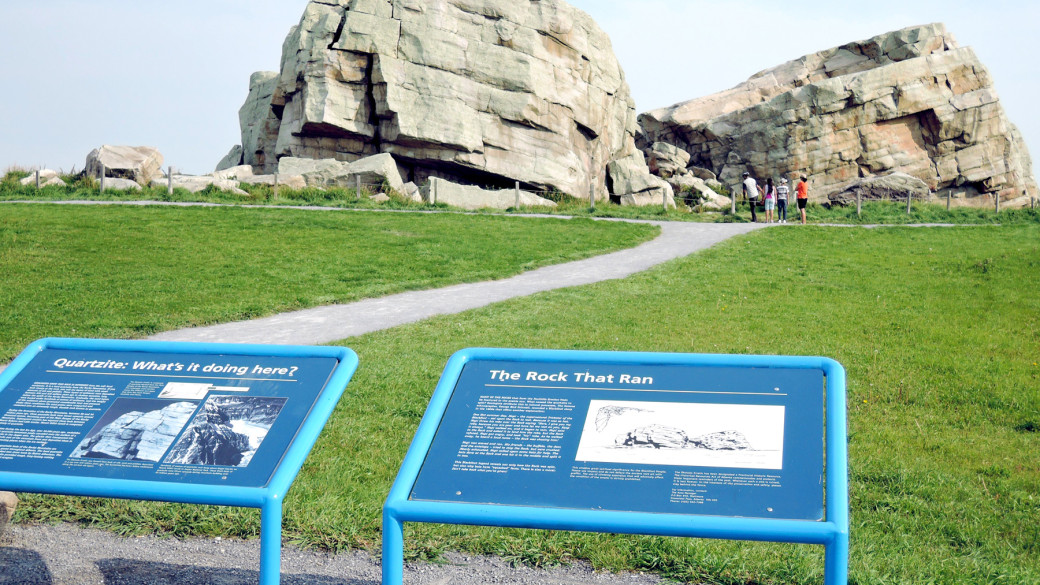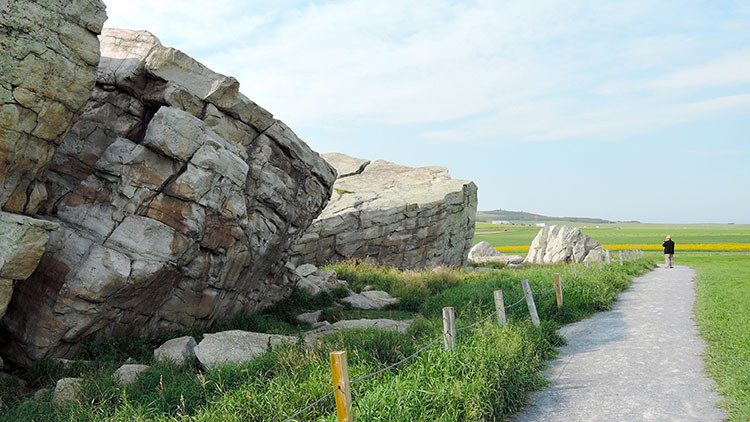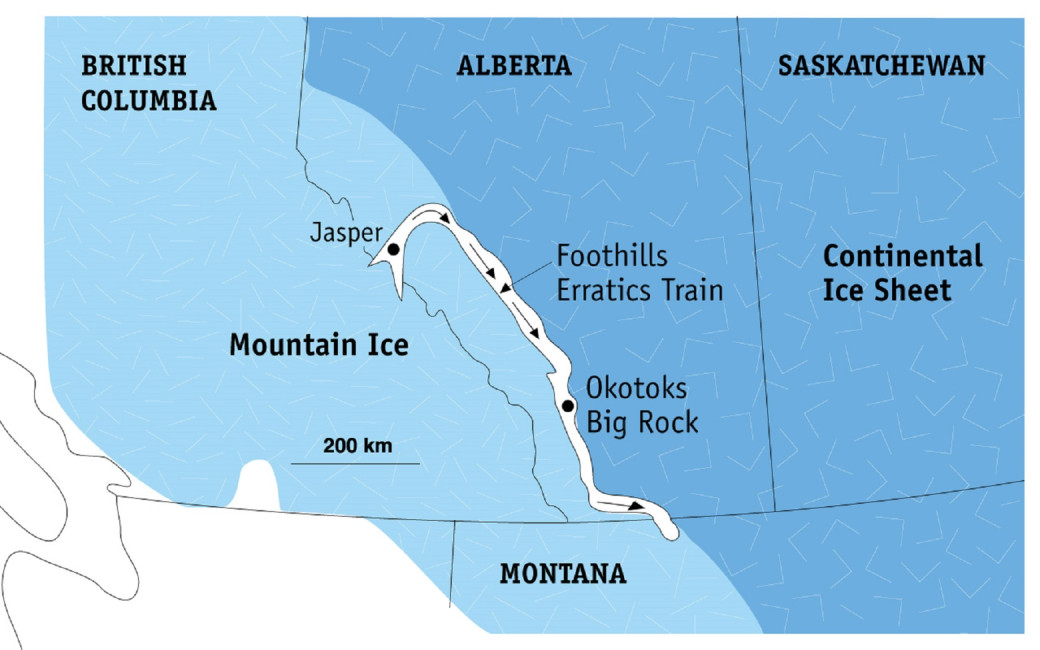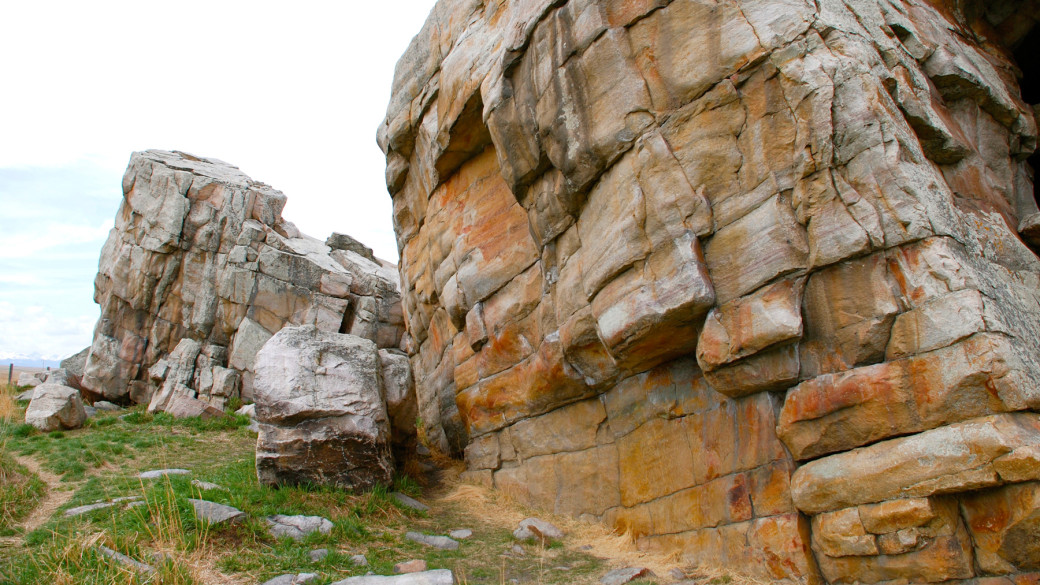Rock placement
Visible from considerable distance across the relatively flat terrain of the prairie landscape, ‘Big Rock’ is an enormous glacial erratic. The 16,500-tonne (18,200-ton) boulder transported far from its mountainous place of origin by a rockslide then by a glacial sheet of ice between 10,000 to 30,000 years ago to its present-day location just west of the Town of Okotoks.


Big scree
Big Rock was originally part of a mountain formation in what is now Jasper National Park. During the last ice age - about 30,000 years ago - a large rockslide crashed debris onto the surface of a glacier that occupied the present day Athabasca River valley, and this debris, including Big Rock, was carried out of the mountains on the glacial surface. As the ice melted and the glacier retreated to the mountains, the rocky debris, including this huge erratic, were deposited across the prairies.

Protected area
In 1978, the Government of Alberta designated Okotoks “Big Rock” Erratic a Provincial Historic Resource to protect its geological and cultural importance.
In 2013 and 2016, The Government of Alberta partnered with CyArk and University of Calgary to capture and provide high resolution 3D scans of the Erratic for educational and research purposes. For more information and to access the download files, visit the CyArk and the University of Calgary project sites.
Indigenous significance
The Indigenous Blackfoot peoples name for the erratic is derived from their word for rock, which is "okatok."
A traditional Blackfoot story describes how Big Rock came to feature the large split down its middle:
One hot summer day, Napi, the supernatural trickster of the Blackfoot peoples, rested on the rock because the day was warm and he was tired. He spread his robe on the rock, telling the rock to keep the robe in return for letting Napi rest there. Suddenly, the weather changed and Napi became cold as the wind whistled and the rain fell. Napi asked the rock to return his robe, but the rock refused. Napi got mad and just took the clothing. As he strolled away, he heard a loud noise and turning, he saw the rock was rolling after him. Napi ran for his life. The deer, the bison and the pronghorn sheep were Napi's friends, and they tried to stop the rock by running in front of it. The rock rolled over them. Napi's last chance was to call on the bats for help. Fortunately, they did better than their hoofed neighbours did, and by diving at the rock and colliding with it, one of them finally hit the rock just right and it broke into two pieces.
The tale provides helpful caution against taking back what you have given away.
Rock chips
The Okotoks Erratic - made up of quartzite that is light grey, pink, to purplish in colour - measures about 9-metres tall, 41-metres long and 18-metres wide, or about the size of a three-storey apartment building.

It is a piece of the Gog Formation; layers of sediment deposited between 600 million and 520 million years ago in a shallow sea eons before the uplift of the Rocky Mountains.
- As time passed, the sediment was buried as layer upon layer built up four kilometres deep in places.
- The heat and pressure generated by the weight of the overlying sediments compacted the sand grains and cemented them into an extremely hard, durable rock called quartzite.
Quartzite is slippery to climb and although it is hard, pieces can break off.
Enjoy the beautiful colours, textures and feel of the Big Rock, but stay on the ground.
Please help us protect this Provincial Historical Resource for others to enjoy.